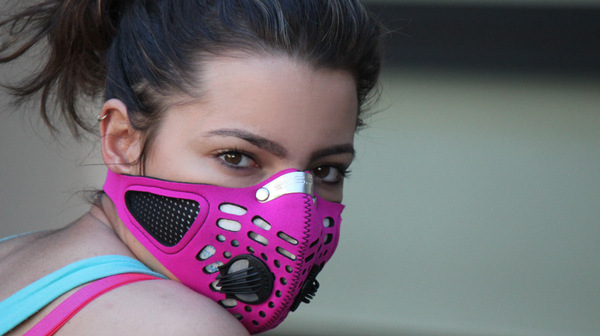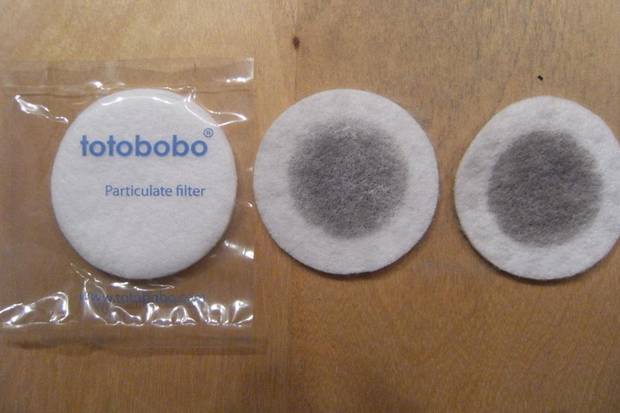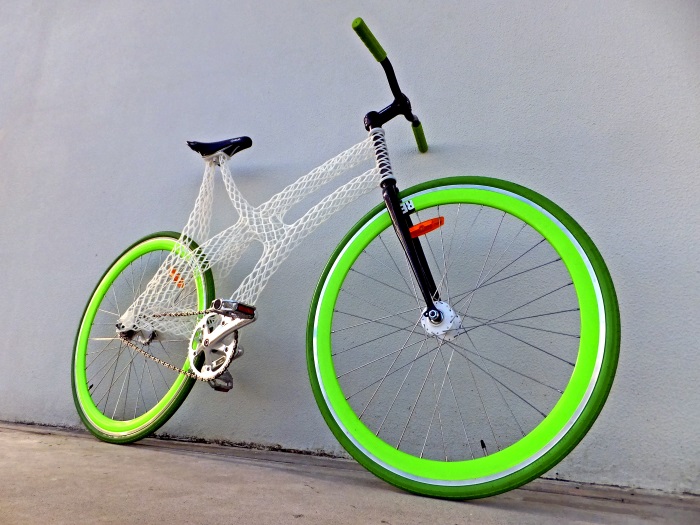
Cycling in the city is a quick way to get around, but one of the inescapable downsides of riding on the road is the traffic around you.
Cars, vans and buses omit carbon monoxide, ozone and nitrogen dioxide, and PM10s – tiny particles of smoke. Unfortunately when you’re sitting amongst them at traffic lights or riding alongside, you’re bound to breathe some of these fumes in.
Breathing in pollutants is reported to reduce lung function, and restrict air passages – which leads to chest pain, as well as increasing the chance of developing asthma.
It has even been suggested that spending time in traffic – for drivers and cyclists – can even be a trigger for heart attacks. However, it’s generally understood that the pollution is only a trigger to an existing problem (which is avoided with regular exercise).
Of course, cyclists, drivers and pedestrians alike breathe in these fumes on a day to day basis – but some people argue that cyclists are more adversely affected because they are more exposed than drivers.
Not only that, but cyclists breathe more heavily during exercise, and often through their mouths, rather than their noses, which contain tiny hairs which act as a filter to many of the harmful particles.
Studies are conflicting, and research by the Healthy Air Campaign, Kings College London and Camden Council, showed that drivers experienced pollution levels five times higher than those suffered by cyclists. Arguably this is because cyclists can filter past stationary traffic, rather than sitting in it.
Sore throat and coughing
People who have suffered symptoms as a result of breathing in polluted areas list a sore throat, coughing, chest pains and watery eyes, particularly in the evening after a full day of inhaling the dirty air, as noticeable signs.
A fairly popular solution among people who are worried about breathing in these fumes it to opt for an anti-pollution cycling mask, such as those sold by Respro and Totobobo.
Masks, such as the Respro City Mask pictured, come in at around £25, in lots of colours and fits.
The wearing of these masks is supported by the British Lung Foundation, who state in their Lung Report: “If you have to be exposed to traffic fumes, for example if you are a cyclist or courier – wear a mask.”
There are several examples of cyclists who have tried using a cycling mask. Cyclist John Leneham called for improve air quality when he tried using a ‘Totobobo’ pollution mask, and was shocked by the sight of the pollution left on the filters:

A reader of The London Cyclist blog, Claire, tested one, too – and showed similar results in her pictures of the filters:

The pictures provide visual evidence that pollution is present in the air and that the masks are preventing it from entering the lungs of the riders.
Smaller than the width of one single human hair
However, masks cannot filter out the very tiniest of particles – PM10s, for example, are 10 micrometers in diameter – that’s smaller than the width of one single human hair.
Not only that, but the mask needs to fit very, very closely to prevent such tiny particles from getting into your lungs.
Most come in varying sizes, and are contoured to fit the face so the gaps are almost non-existent, but they can’t be eliminated completely.
Other drawbacks of face masks, of course are that they can be hot and stuffy, even limiting exertion, and, of course – the close resemblance to Darth Vader in look and sound is not ideal for all commuters.
It does seem that these fetching masks could provide a benefit to cyclists who have to ride in busy cities. However, being hesitant to do so is completely understandable.
Other options for avoiding the smog is to choose routes with less traffic, which is an all-round more enticing option.
There are many almost entirely traffic free cycle paths available across the UK, mapped out and maintained by the charity Sustrans. Check out some of these coastal bike rides for inspiration.
The greatest consumption of unwanted fumes takes place when you’re sitting behind cars in traffic – so ensuring you filter to the front of the queue, provided there is time and space, is another effective way to keep your lungs clear.
Overall, we’d say if you can accept having your face covered on your ride, and you commute in a busy city, a mask can’t be a bad idea, but taking small day-to-day steps to stay out of the smog might be inviting for more commuters.





